In this essay I will analyse a section of the famed Odessa steps sequence from the film Battleship Potemkin (USSR 1925: Sergei Eisenstein), which appears half way through the scene and begins at the time code reference 0:53:20. I will also be discussing the historical context of the film and how this relates both to the scene and the film as a whole.
Directed by Sergei M. Eisenstein in 1925, the film was intended to be an experiment in the use of montage to evoke emotional responses from the audience, for the purpose of propaganda. Promoting the socialist ideals of the current Bolshevik government of the time, Eisenstein uses the relatively new medium of moving pictures, as a vehicle for political expression rather than a source of entertainment.
In October 1917, Russia was subject to a communist revolution led by Vladimir Lenin which culminated in the storming of the winter palace in St. Petersburg.
This was itself the subject of another of Eisenstein’s films; October (USSR 1927) which celebrated the tenth anniversary of the communist uprising. Lenin was influenced by the writings of Karl Marx and this formed his belief that Russia should be subject to a new socialist governing body, as apposed to the Tsarist dictatorship which had dominated the country’s history. The film begins with a quote from Lenin and immediately sets the tone of revolution and the struggle against tyranny and oppression of the Tsarist regime.
The ensuing civil war between the Bolsheviks and the loyal Tsarists resulted in defeat for the White army and its allies and saw the soviet revolutionaries create a new government. The bourgeois provisional government was removed from power and a regime in which a democratic proletariat led the country was initiated under Bolshevik leaders. This was a new dawn in terms of the country’s history and it also marked a new era in moving pictures.

The powerful ensemble of images one witnesses in this sequence are indeed unforgettable and a clear insight into the ideals of the soviet ethos. It could not be further removed from the narrative style of story telling favoured by Western film-makers of the time. The portrayal of the massacre on the steps of Odessa is not a re-telling of an actual event, this massacre never happened at all.
However, during the first revolution in 1905, a similar massacre did take place during a peaceful demonstration on “Bloody Sunday” outside of the Tsars’ palace. The scene can be viewed as a condensed representation of the entire film’s allegory – a testament to the sacrifice, bravery and commitment to socialism of the proletariat in their struggle for freedom.
The sequence I wish to concentrate on is amongst the most harrowing and moving scenes ever committed to film. The editing technique is a landmark example in the use of montage. Its intention was to combine a series of images that would elicit the greatest possible emotional response from the audience. Eisenstein was influenced by the Kuleshev School of film-making, which was itself amongst the first to experiment with montage.
By combining a series of fast-paced jump cuts, emotional close-ups juxtaposed with wide shots and a combination of static and tracking shots, the sequence results in an assault on the audience’s emotions and is considered to be a master class in the art of film-making. So much happens in a short time period, that it would be impossible to analyse every single shot in the sequence without writing reams of commentary. Instead I wish to analyse key shots, discussing the cinematic technique and the desired effects that Eisenstein intended.
The first shot in the sequence is a title displaying the words “The Cossacks”. These fierce, mounted soldiers were feared throughout Russia as merciless agents of the Tsarist regime. One is reminded of the equally infamous scene in Doctor Zhivago (USA 1965: David Lean) in which a crowd is attacked by a brigade of Cossacks when protesting; this scene was no doubt influenced by Eisenstein’s work.
Following the title card, we witness the crowd fleeing at the foot of the Odessa staircase, people of all ages run for their lives, fleeing from the riflemen who had already been firing on the crowd from the top of the steps. In the foreground of this initial shot we see the Cossack’s black horses being driven in front of the fleeing crowd and as the action cuts to a wide static shot of the foot of the steps, we see their mounts attacking the defenceless escapees.
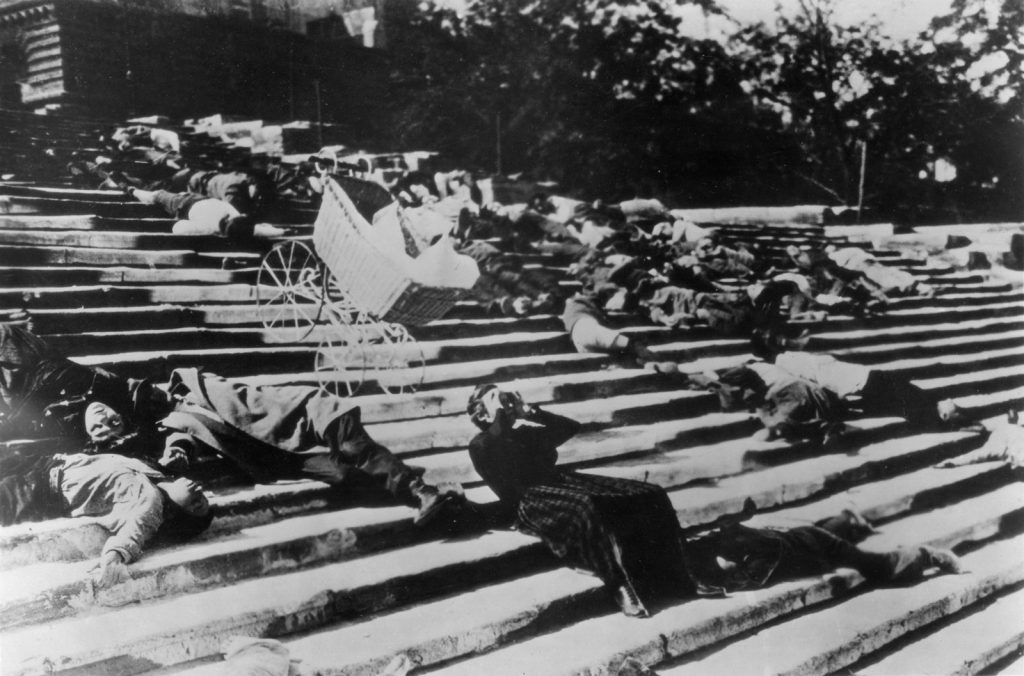
Eisenstein then uses a series of images to heighten the tension by combining a multitude of jump cuts that involve several static shots. Firstly the advancing riflemen make their way towards the crowd from their elevated position on the staircase, he then jumps to a shot of several citizens in- front of some railings at the foot of the staircase. One man is shot as he attempts to bolt over the railings and we see the crowd running in terror down the steps in the background.
Again, a series of shots are combined to show rifles being fired on a group of people surrounding an old woman. We briefly witness the panic stricken group and the action cuts briefly to a close-up of the rifles being discharged from the right hand side. We are then led straight to a shot of the rifles now raised and advancing once more from the left of the frame to the right. This frantic style of editing gives the scene an extremely quick pace and intensifies the action as we witness innocent and unarmed citizens being slain by a ruthless enemy.

Significantly, we rarely see the Cossacks’ faces as we do the citizens of Odessa. In contrasting the anguish of the victims in close-up with the cruelty of their faceless antagonists, Eisenstein increases our sympathy for the former. A young and beautiful mother is introduced in the next shot and so begins the most harrowing, celebrated and imitated set of images in the film.
The woman dressed in black is pushing her baby in a pram and enters the frame from the right hand side. Stopping in the centre of the shot, she leans over the carriage to protect her baby. All around her is chaos as scores of people run down the staircase, away from the approaching soldiers.
This powerful imagery pulls on the heart strings of the audience as there is nothing more defenceless than women and children. Next, a series of brief shots create an unforgettable montage of horror and dismay. Here, using a combination of static, travelling and wide shots and close-ups, Eisenstein, in an obvious ploy to completely win the sympathy of the audience for the victims, creates immense tension.
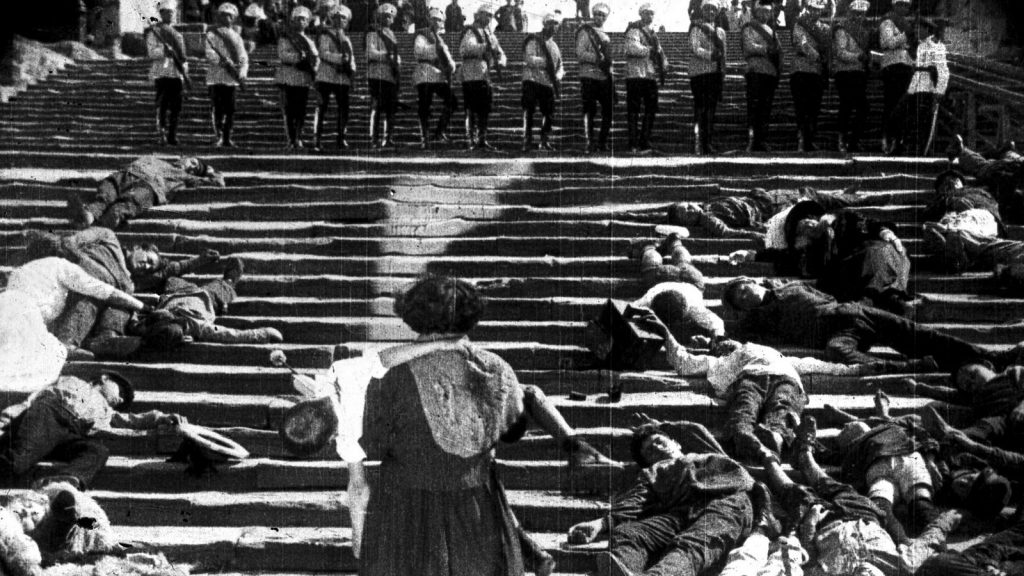
We bear witness to the murder of the young mother who is shot by rifle fire. By concentrating on the woman’s face with a series of extreme close up shots, the audience is forced to watch as the mother is unable to protect her child or herself. Following a series of close ups of the soldiers’ advancing march down the steps and interspersed with previous shots of the crowds at the foot of the staircase and the railings, there follows a close up shot of the mother’s midriff, revealing an emblem of a swan on her belt buckle.
This perhaps represents purity, beauty and love and is a fine example of the use of semiotics to convey these themes and subconsciously evoke sympathy for the slain mother who is the representation of all that is pure and good in life. As her hands fall down over the buckle, we see they are bloodstained.
Eisenstein creates even more tension by focusing on a close up of the pram’s wheels, which are about to be tipped over the edge of the step and in a combination of close up shots, the mother falls to the ground and in so doing, pushes the pram forwards by leaning back against it, her baby still inside the carriage. This is all witnessed by another older woman who is seen to gasp in horror as the pram begins to hurtle down the steps, gathering momentum as it goes. Here the use of travelling shots follow the baby in the carriage as it free wheels down the staircase.
Combined with several static shots viewed from the right hand side of the steps, we see the infant travel towards untold doom as it makes its way down towards the bottom of the steps. The sense of perspective is maintained by the constant jump cuts back to the advancing soldiers and the struggle with the Cossacks at the bottom of the steps. A young man also witnesses this as the pram passes him and he cries out in anguish.
This is revealed in a close up of his face which turns from left to right, implying the pram has passed before him. The pram then reaches the bottom of the staircase and we are spared the details of the fate of the child, although it is assumed that the carriage tips over. There follows a close up of a soldier who hacks at the camera three times with a vicious expression. We are then shown a blood spattered old woman’s face in close up; the broken lens on her pince-nez reveals that she too has been shot. The shot then dissolves and the sequence is over.
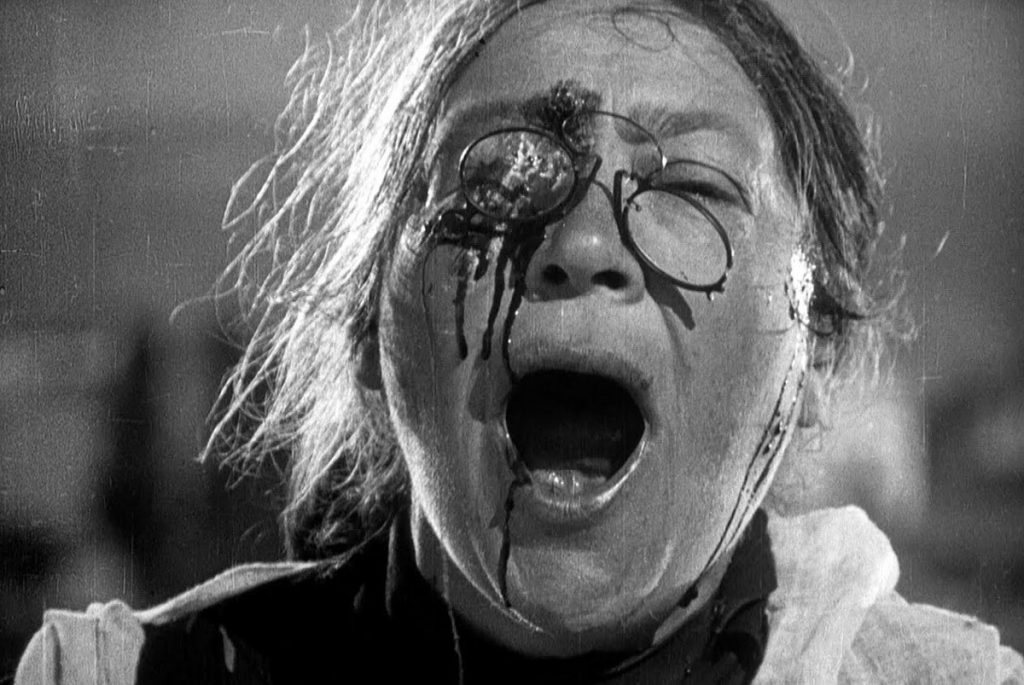
It is also important to note that throughout the sequence, the First movement of Shostakovich’s Fifth symphony is playing. This is a powerful and emotional piece of music that fits the imagery perfectly and evokes a greater amount of emotion with its dramatic minor key motifs, played primarily on stringed instruments.
Eisenstein’s most famous film will always be synonymous with this scene and it has had a wide reaching and long lasting influence on film-making. Even Nazi propaganda Minister Joseph Goebbels hailed it as a masterpiece and its iconic imagery has been widely imitated ever since. Despite its lack of success upon release in its native country, Battleship Potemkin will forever remain a landmark in cinematic technique and the greatest example of montage in the entire history of cinema.
Filmography
The Battlship Potemkin (USSR 1925; Sergei M. Eisenstein)
Dr. Zhivago (USA 1965; David Lean)
Did you enjoy this article about Battleship Potemkin?
You can read more of our articles here.
Please join us on social media on Facebook, Instagram, Tik Tok and Twitter. We really appreciate all the likes, shares, retweets etc., and we would love to hear from you and continue the wonderful celebration of all things cinema on these platforms.
If you love to watch videos on YouTube, then please subscribe to our channel here. There’s lots of fun and informative videos uploaded that we hope you will enjoy!
We have a passion for movies and aim to produce entertaining and informative movie-related content. It certainly is a lot of hard work, but we love films so much that it’s worth all the effort. We have to keep the lights on and make sure we have plenty of caffeine to keep all of the articles, videos and social media posts coming, so if you like our work, then please consider supporting us at Buy Me A Coffee here. You can also become a More Movies patron on Patreon here.
To help support us here at More Movies, we do use advertising in a few places, so we appreciate it if you do not use AdBlockers on our site, as this helps keep a few pennies trickling in. We also utilise affiliate links throughout the site, usually to help guide our readers to places to stream, rent or buy the movies we talk about. One of the biggest sources for movies online is Amazon Prime Video, where you can stream over 18,000 films. If you are interested in Prime and haven’t signed up yet, you can get a 30-day free trial via this affiliate link, which helps support us too.

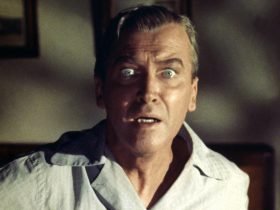
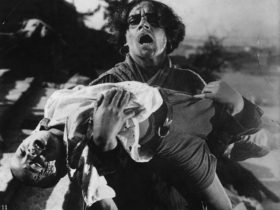


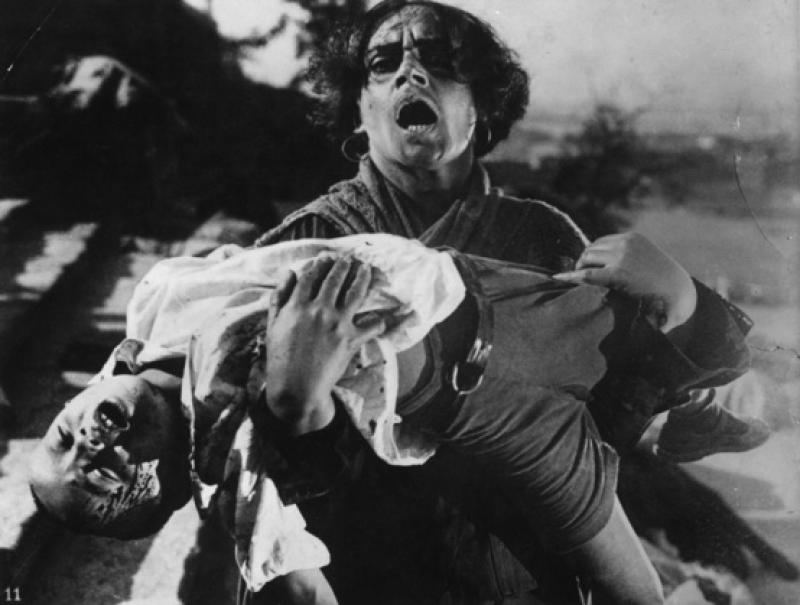
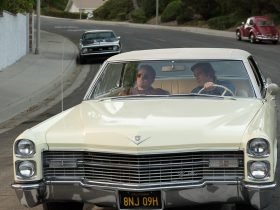


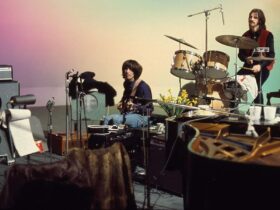
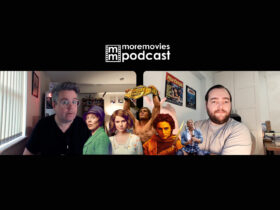
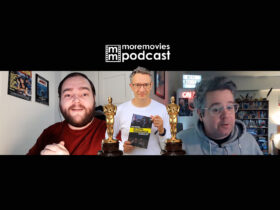
Leave a Reply